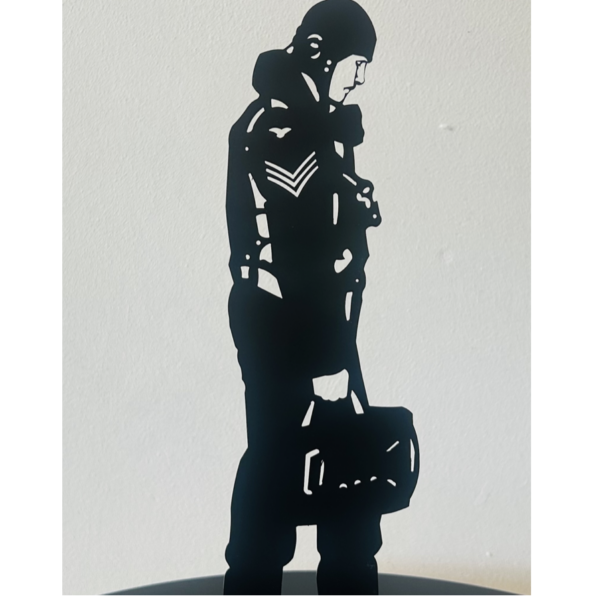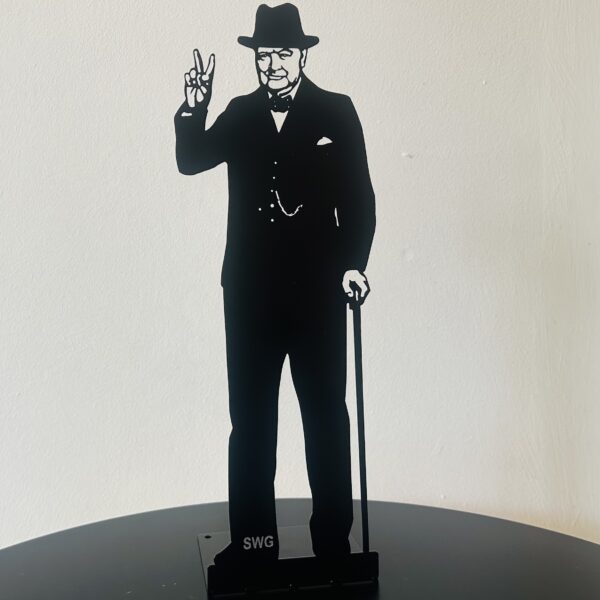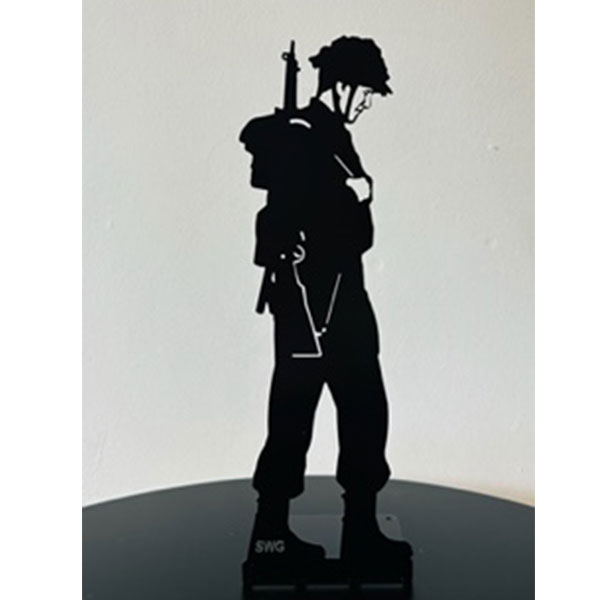
George Alfred Altass
This story is shared by the Trust with kind permission from John Hamblin, Researcher. The photos are courtesy of Roger Altass and Barnardos.
George Alfred Altass, Lieutenant 214210, TEM, Wiltshire Regiment attached to the 3rd Battalion, Monmouthshire Regiment. Killed in action on the 6th of August 1944, aged 25.
George Alfred Altass was born at Fulham on the 5th of January 1919 the second son of David Sidney Altass, a fitter, and Sarah Maud Altass (née Curtis) of 37, Quick Road, Chiswick. They had two other children, Sidney and Edith.
George and his brother, Sidney had a disrupted childhood. Their father had served in the First World War, part of which was spent in German East Africa where he contracted Malaria and dysentery. He was discharged in 1918 and was in receipt of a war pension of 11s.6p (57p) per week. He found work as a driver and mechanic but in 1923 he was imprisoned for six months in Wormwood Scrubs for theft. It was said that their Mother was refused Parish Relief but no reason was given as to why she also refused to go into the workhouse. A local mission and some of her relatives helped to provide her and the children with food.
She was in receipt of half of David's pension and drew 5s.9p per week, (just over 25p) of which went in rent for two rooms per week but she was not able to cope. She kept Edith but sent George and Sidney to Barnardo's. She offered to pay her share of the pension money to Barnardo's on admission of the boys.

Barnardo's admission photo for George, on the left, and Sidney. Source: Barnardo's
They were admited for six month intially and they were they were then admitted to the Boys Garden City, Woodford Bridge, on the 18th April 1923. Sidney was then fostered out on the 15th September 1923 to Old Heath, Colchester, where he stayed for almost five years before first going to Salmon Lane, Limehouse on the 12th January 1928 and back to The Boys Garden City on the 18th January 1928. Sydney was then transferred to the William Baker Technical School, Hertford on the 10th April 1931 where he stayed until going to his first job as a Cabinet Maker Improver with Universal Furniture Products Ltd, Wembley on the l0th July 1933.
George was also was also fostered out but he went to Old Heath, Colchester. On the 18th September 1929 he went to The Receiving House, Stepney before being fostered, first at Chalford on the 23rd September 1929, then at Uplands on the 5th September 1930 and finally with Mrs Powell of Caincross Retreat on the 3rd October 1930.
He was educated at Caincross C of E School and and then gained a special place at Marling School, Stroud in Gloucestershire. For a long time he was a member of Cairncross Church choir. He then lived at 29 Lorrimore Square, Walworth, London SE17 and on the 2nd December 1935, he went to his first job as a Junior Clerk with Messrs. Stevens and Co. Insurance Brokers, Walbrook, London EC.
He had joined the Territorial Army and was called up when the war began. He was commissioned as a 2nd Lieutenant in the Royal Artillery on the 25th of October 1941. He was promoted to Lieutenant on the 1st of October 1942 and transferred to the Wiltshire Regiment with the same rank on the 1st of April 1944 and was attached to the 3rd Battalion, Monmouthshire Regiment on the 6th of July 1944. He joined them while they were in a rest area at Coulombs in Normandy.
The 3rd Battalion, Monmouthshire Regiment had landed in Normandy on the 14th of June 1944. They spent several weeks unsuccessfully attempting to break out of the bridgehead in the vicinity of Caen as part of Operations “Goodwood ” and “Bluecoat”. By early August, mounted on tanks from the Fife and Forfar Yeomanry, they had broken through the German defences and were in position around the village of Sourdeval on the Bas Perrier Ridge, but were surrounded on three sides.
On the 5th of August 1944 the artillery of the 10th SS Panzer Division began a heavy bombardment of their positions which was soon followed by tank and infantry attacks. The British tanks were forced back at the same time as C and D Companies of the 3rd Monmouths were attacked by the infantry and were soon driven back as far as their Battalion Headquarters before they managed to check the attack. Casualties were so heavy during this assault that the survivors of the battalion were forced to merge with the 1st Battalion, Norfolk Regiment (who were also at half strength) when they arrived to relieve them the following day. The Fife and Forfar Yeomanry had twenty tanks left and the combined battalions numbered five hundred and fifty men.
Fifteen minutes after the Norfolks arrived, the Germans renewed their attack. After hand to hand fighting the Germans overran the forward positions and, once again, their infantry came within two hundred yards of Battalion Headquarters. Amid smoke from exploding ammunition, burning vehicles and nearby houses the personnel from headquarters held their ground and drove off the attack. During the fighting George Altass and 2nd Lieutenant G.C. Williams, who were both operating from Bren gun carriers, were posted as missing.
The combined battalion had suffered casualties of a further one hundred and sixty men, killed wounded or missing. For his gallantry that day Lance Corporal Sidney Bates of the 1st Battalion, Norfolk Regiment was awarded the Victoria Cross.
George Altass was awarded the Territorial Efficiency Medal, which was announced by the War Office on the 21st of January 1949. He is commemorated on the war memorial at Lloyd’s of London. He is buried at Bayeux War Cemetery, Plot XVI Row E Grave 5.
FALLEN HEROES
GEORGE ALFRED ALTASS
Army • LIEUTENANT
Wiltshire Regiment
DIED | 06 August 1944
AGE | 25
SERVICE NO. | 214210
FALLEN HEROES
GEORGE ALFRED ALTASS
Army • LIEUTENANT
Wiltshire Regiment
DIED | 06 August 1944
AGE | 25
SERVICE NO. | 214210







